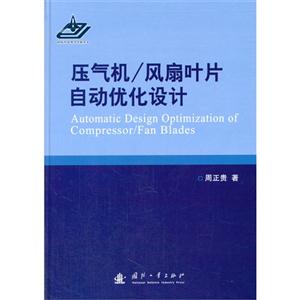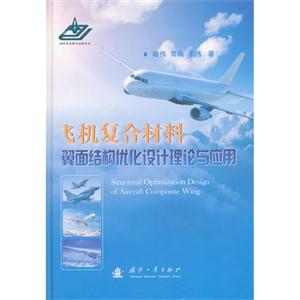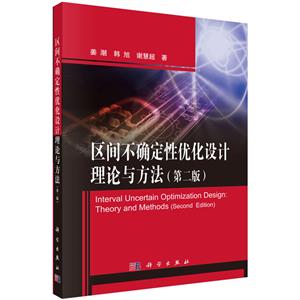
作者:陈进,汪泉
页数:380
出版社:科学出版社
出版日期:2017
ISBN:9787030548535
电子书格式:pdf/epub/txt
内容简介
陈进、汪泉著的《风力机翼型及叶片优化设计理论》介绍了风力机专用翼型、叶片气动外形及其内部结构的设计理论与方法,主要包括五部分内容:风力机专用翼型族的设计理论与方法,新翼型族的风洞试验,叶片气动外形设计与优化,复合材料风力机新型叶片结构优化设计以及叶片二元翼段气动弹性稳定性分析。除了阐述风力机叶片设计相关基本概念和基本理论外,书中重点介绍了目前风力机专用翼型设计中先进的理念与方法、叶片气动性能优化设计方法以及气动载荷条件下的复合材料风力机叶片结构优化设计方法,并给出了结果评价。本书可作为高等院校风电相关专业的研究生以及风电相关行业科研院所的工作人员的参考书,也可供机械工业部门和其他工业部门气动与结构设计人员参考。
目录
Preface
1 Introduction
1.1 Introduction
1.2 The research in China and worldwide
1.2.1 Research on wind turbine airfoils
1.2.2 Research on aerodynamic shape and performance of wind turbine blades
1.2.3 Research on structural design of composite wind turbine blades
1.2.4 Research on aeroelastic performance of wind turbine blades
2 Aerodynamic characteristics of wind turbine airfoils
2.1 Introduction
2.2 Basic theory of wind turbine airfoils
2.2.1 Geometric parameters of airfoils
2.2.2 Reynolds number
2.2.3 Mach number
2.2.4 Boundary layer
2.2.5 Potential flow solving method for an arbitrary airfoil
2.3 Aerodynamic characteristic of airfoils
2.3.1 Pressure coefficient of the airfoil
2.3.2 Lift coefficient
2.3.3 Drag coefficient
2.3.4 Pitching moment coefficient
2.4 Stall on airfoils
2.5 Roughness properties of airfoils
2.6 Influence of geometric parameters on aerodynamic characteristics
2.6.1 Influence of the leading edge radius of an airfoil
2.6.2 Influence of the maximum relative thickness and its position
2.6.3 Influence of the maximum camber and its position
2.7 Influence of Reynolds number on aerodynamic characteristics
2.8 Method of predicting aerodynamic performance of airfoils
2.8.1 Introduction to XFOIL and RFOIL
2.8.2 Airfoil aerodynamic performance calculation cases
2.9 Chapter conclusions
3 Integrated expressions of wind turbine airfoils
3.1 Introduction
3.2 Transformation theory of airfoils
3.2.1 Conformal transformation
3.2.2 Joukowsky transformation of airfoils
3.2.3 Theodorsen method
3.3 Integrated expression of airfoil profiles
3.3.1 The trigonometric series representation of airfoil shape function
3.3.2 The Taylor series representation of airfoil shape function
3.4 Airfoil profile analysis using integrated expressions
3.4.1 Type I airfoil profile
3.4.2 Type II airfoil profile
3.4.3 Type III airfoil profile
3.5 Versatility properties for integrated expression of airfoils
3.5.1 First-order fitting
3.5.2 Second-order fitting
3.5.3 Third-order fitting
3.6 Control equation of shape function
3.6.1 Characteristics of airfoil sharp trailing edge
3.6.2 Horizontal offset characteristics
3.6.3 Vertical offset characteristics
3.6.4 Design space
3.7 Convergence analysis of integrated expression of airfoils
3.7.1 Convergence characteristic of airfoil shape
3.7.2 Convergence characteristic of airfoil aerodynamic performance
3.8 Chapter conclusions
4 Theory of parametric optimization for wind turbine airfoils
4.1 Introduction
4.2 Design requirements of wind turbine airfoils
4.2.1 Structural and geometric compatibility
4.2.2 Insensitivity of the maximum lift coefficient to leading edge roughness
4.2.3 Design lift coefficient
4.2.4 The maximum lift coefficient and deep stall characteristics
4.2.5 Low noise
4.3 Single object optimization of wind turbine airfoils
4.3.1 Objective function
4.3.2 Design variables
4.3.3 Design constraints
4.3.4 Optimization method with MATLAB
4.3.5 Optimized results
4.3.6 Roughness sensitivity of the optimized airfoils
4.3.7 Comparative analysis of the performance of optimized airfoils
4.4 Multiobjective optimization of the wind turbine airfoils
4.4.1 Design variables
4.4.2 Objective function
4.4.3 Design constraints
4.4.4 Multiobjective genetic algorithm
4.4.5 WT series wind turbine airfoils of high performance
4.4.6 WTH series wind turbine airfoils with high lift-to-drag ratio
4.4.7 WTI series wind turbine airfoils with low roughness sensitivities
4.5 Design of airfoils with medium relative thickness
4.5.1 Geometric characteristics analysis of medium thickness airfoils
4.5.2 Aerodynamic characteristics of airfoils with medium thickness
4.5.3 The design of a new airfoil with medium thickness
4.5.4 The effects of turbulence, Reynolds number and blade rotation
4.6 Design of airfoils based on noise
4.6.1 Acoustic theory for wind turbines
4.6.2 The measurement of noise
4.6.3 The acoustics model of the airfoil
4.6.4 Comparison of noise calculations
4.6.5 Influence of geometric parameters of airfoils on noise
4.6.6 Design of wind turbine airfoils with high efficiency and low noise
4.7 Airfoil design based on a 2D power coefficient
4.7.1 The optimization model
4.7.2 The optimization flow chart
4.7.3 CQU-DTU-B airfoil series
4.7.4 Influence of airfoil trailing edge on the performance of the airfoil
4.8 Improved design of airfoils using smooth curvature technique
4.8.1 Smooth continuity of the profile for airfoil shape function
4.8.2 Curvature of profile for airfoil shape function
4.8.3 Improvement and optimization of the airfoil
4.8.4 Optimization results
4.9 Design of wind turbine airfoils with high performance
4.9.1 Objective function
4.9.2 Design variables
4.9.3 Design constraints
4.9.4 Optimization results and analysis of thin airfoil series
4.9.5 A new direct design method for medium thickness wind turbine airfoils
4.9.6 Optimal model of thick airfoil series
4.9.7 Optimization results
4.10 Chapter conclusions
5 Experiments on the wind turbine airfoil and data analysis
5.1 Introduction
5.2 Design and manufacture of the airfoil model
5.3 Apparatus, method and data processing of the experiment
5.3.1 Wind tunnel
5.3.2 Installation of the model
5.3.3 Test apparatus
5.3.4 The experiments and data processing
5.4 Results of the experiments
5.4.1 Free transition conditions
5.4.2 Fixed transition conditions
5.4.3 Comparison of the results from experiments and RFOIL
5.4.4 Comparing different experimental cases
5.5 Chapter conclusions
6 Aerodynamics of wind turbine rotors and tip-loss corrections
6.1 Introduction
6.2 Aerodynamics of the wind turbine rotor
6.2.1 The momentum theory
6.2.2 The blade element theory
6.2.3 The blade element momentum theory
6.3 The tip-loss correction model
6.3.1 The tip-loss correction model of Glauert
6.3.2 The tip-loss correction model of Wilson and Lissaman
6.3.3 The tip-loss correction model of De Vries
6.3.4 The tip-loss correction model of Shen
6.4 The BEM model with Shen’s tip-loss correction
6.5 Experimental validation
6.6 Chapter conclusions
7 Integrated representations for wind turbine blade shapes
7.1 Introduction
7.2 The integrated representations of 3D blade surface
7.2.1 Integrated expressions for 3D flat blades
7.2.2 Integrated expressions on 3D blade with chord variation
7.2.3 Integrated expressions on 3D blade with chord and twist variations
7.3 Integrated representations for blades of an ART-2B rotor
7.4 Chapter conclusions
8 Shape optimization of wind turbine blades
8.1 Introduction
8.2 Influences of key parameters on the performance of rotors
8.2.1 Three rotors with different power
8.2.2 Two rotors with the same power and different airfoil series
8.3 Optimization model of wind turbine blades based on COE
8.3.1 Optimization objective function
8.3.2 Design variables and constraints
8.3.3 Optimization program and method
8.3.4 Optimization results
8.3.5 Comparison of rotor performance
8.4 Optimization of blades for 2 MW wind turbines
8.4.1 Design of new wind turbine blades
8.4.2 Establishing the multiple-objects optimization model
8.4.3 Optimization result
8.5 Chapter conclusions
9 Structural optimization of composite wind turbine blades
9.1 Introduction
9.2 Basics of the mechanics of composite materials
9.2.1 Classification of fiber reinforcement composite materials
9.2.2 Characteristics of composite materials
9.2.3 Basic structures of composite materials and analysis methods
9.2.4 Anisotropy mechanics theory of composite materials
9.2.5 Strength criteria of unidirectional plies
9.2.6 Strength analysis of laminates
9.2.7 Structural design principles of composite materials
9.3 Structural design of wind turbine blades made of composite materials
9.3.1 The geometric shape of the new blade
9.3.2 Design of internal structure of the blade
9.4 Parametric finite element modeling of composite wind turbine blades
9.4.1 The integrated representation of three-dimensional blade shapes
9.4.2 Parametric representation of chord and twist of wind turbine blades
9.4.3 Parametric finite element modeling of wind turbine blades
9.5 A new fluid-structure interaction method for blade design
9.5.1 The operating conditions of wind turbines
9.5.2 The local angle of attack and pressure distribution
9.5.3 The interpolation of aerodynamic forces
9.6 Study of the structural optimization of the wind turbine blade made of composite materials
9.6.1 The optimization model
9.6.2 Optimization algorithm combined with finite element method
9.7 Optimization results
9.8 Chapter conclusions
10 Analysis of the aeroelastic coupling of wind turbine blades
10.1 Introduction
10.2 The structural kinetic model of wind turbine blades
10.3 The coordinate transformation
10.4 The wind load model
10.4.1 The normal wind model
10.4.2 The extreme wind model
10.5 Results validation
10.6 Case analysis
10.7 Chapter conclusions
11 Aeroelastic stability analysis of two-dimensional airfoil sections for wind turbine blades
11.1 Introduction
11.2 Static aeroelastic stability analysis of 2D airfoil section for wind turbine blades
11.2.1 Static aeroelastic model of wind turbine airfoil section
11.2.2 Analysis of the aeroelastic feedback system for a typical airfoil
11.3 Classic flutter problem
11.3.1 Structural dynamic model
11.3.2 The aerodynamic model
11.3.3 The aerodynamic-structural coupling calculation model
11.3.4 Aeroelastic analysis of a wind turbine airfoil section
11.4 The dynamic stall and aeroelastic analysis of the wind turbine blade
11.4.1 The structural kinematics model
11.4.2 The aerodynamic model
11.4.3 The aeroelastic coupling system
11.4.4 The numerical results
11.5 Chapter conclusions
References
1 Introduction
1.1 Introduction
1.2 The research in China and worldwide
1.2.1 Research on wind turbine airfoils
1.2.2 Research on aerodynamic shape and performance of wind turbine blades
1.2.3 Research on structural design of composite wind turbine blades
1.2.4 Research on aeroelastic performance of wind turbine blades
2 Aerodynamic characteristics of wind turbine airfoils
2.1 Introduction
2.2 Basic theory of wind turbine airfoils
2.2.1 Geometric parameters of airfoils
2.2.2 Reynolds number
2.2.3 Mach number
2.2.4 Boundary layer
2.2.5 Potential flow solving method for an arbitrary airfoil
2.3 Aerodynamic characteristic of airfoils
2.3.1 Pressure coefficient of the airfoil
2.3.2 Lift coefficient
2.3.3 Drag coefficient
2.3.4 Pitching moment coefficient
2.4 Stall on airfoils
2.5 Roughness properties of airfoils
2.6 Influence of geometric parameters on aerodynamic characteristics
2.6.1 Influence of the leading edge radius of an airfoil
2.6.2 Influence of the maximum relative thickness and its position
2.6.3 Influence of the maximum camber and its position
2.7 Influence of Reynolds number on aerodynamic characteristics
2.8 Method of predicting aerodynamic performance of airfoils
2.8.1 Introduction to XFOIL and RFOIL
2.8.2 Airfoil aerodynamic performance calculation cases
2.9 Chapter conclusions
3 Integrated expressions of wind turbine airfoils
3.1 Introduction
3.2 Transformation theory of airfoils
3.2.1 Conformal transformation
3.2.2 Joukowsky transformation of airfoils
3.2.3 Theodorsen method
3.3 Integrated expression of airfoil profiles
3.3.1 The trigonometric series representation of airfoil shape function
3.3.2 The Taylor series representation of airfoil shape function
3.4 Airfoil profile analysis using integrated expressions
3.4.1 Type I airfoil profile
3.4.2 Type II airfoil profile
3.4.3 Type III airfoil profile
3.5 Versatility properties for integrated expression of airfoils
3.5.1 First-order fitting
3.5.2 Second-order fitting
3.5.3 Third-order fitting
3.6 Control equation of shape function
3.6.1 Characteristics of airfoil sharp trailing edge
3.6.2 Horizontal offset characteristics
3.6.3 Vertical offset characteristics
3.6.4 Design space
3.7 Convergence analysis of integrated expression of airfoils
3.7.1 Convergence characteristic of airfoil shape
3.7.2 Convergence characteristic of airfoil aerodynamic performance
3.8 Chapter conclusions
4 Theory of parametric optimization for wind turbine airfoils
4.1 Introduction
4.2 Design requirements of wind turbine airfoils
4.2.1 Structural and geometric compatibility
4.2.2 Insensitivity of the maximum lift coefficient to leading edge roughness
4.2.3 Design lift coefficient
4.2.4 The maximum lift coefficient and deep stall characteristics
4.2.5 Low noise
4.3 Single object optimization of wind turbine airfoils
4.3.1 Objective function
4.3.2 Design variables
4.3.3 Design constraints
4.3.4 Optimization method with MATLAB
4.3.5 Optimized results
4.3.6 Roughness sensitivity of the optimized airfoils
4.3.7 Comparative analysis of the performance of optimized airfoils
4.4 Multiobjective optimization of the wind turbine airfoils
4.4.1 Design variables
4.4.2 Objective function
4.4.3 Design constraints
4.4.4 Multiobjective genetic algorithm
4.4.5 WT series wind turbine airfoils of high performance
4.4.6 WTH series wind turbine airfoils with high lift-to-drag ratio
4.4.7 WTI series wind turbine airfoils with low roughness sensitivities
4.5 Design of airfoils with medium relative thickness
4.5.1 Geometric characteristics analysis of medium thickness airfoils
4.5.2 Aerodynamic characteristics of airfoils with medium thickness
4.5.3 The design of a new airfoil with medium thickness
4.5.4 The effects of turbulence, Reynolds number and blade rotation
4.6 Design of airfoils based on noise
4.6.1 Acoustic theory for wind turbines
4.6.2 The measurement of noise
4.6.3 The acoustics model of the airfoil
4.6.4 Comparison of noise calculations
4.6.5 Influence of geometric parameters of airfoils on noise
4.6.6 Design of wind turbine airfoils with high efficiency and low noise
4.7 Airfoil design based on a 2D power coefficient
4.7.1 The optimization model
4.7.2 The optimization flow chart
4.7.3 CQU-DTU-B airfoil series
4.7.4 Influence of airfoil trailing edge on the performance of the airfoil
4.8 Improved design of airfoils using smooth curvature technique
4.8.1 Smooth continuity of the profile for airfoil shape function
4.8.2 Curvature of profile for airfoil shape function
4.8.3 Improvement and optimization of the airfoil
4.8.4 Optimization results
4.9 Design of wind turbine airfoils with high performance
4.9.1 Objective function
4.9.2 Design variables
4.9.3 Design constraints
4.9.4 Optimization results and analysis of thin airfoil series
4.9.5 A new direct design method for medium thickness wind turbine airfoils
4.9.6 Optimal model of thick airfoil series
4.9.7 Optimization results
4.10 Chapter conclusions
5 Experiments on the wind turbine airfoil and data analysis
5.1 Introduction
5.2 Design and manufacture of the airfoil model
5.3 Apparatus, method and data processing of the experiment
5.3.1 Wind tunnel
5.3.2 Installation of the model
5.3.3 Test apparatus
5.3.4 The experiments and data processing
5.4 Results of the experiments
5.4.1 Free transition conditions
5.4.2 Fixed transition conditions
5.4.3 Comparison of the results from experiments and RFOIL
5.4.4 Comparing different experimental cases
5.5 Chapter conclusions
6 Aerodynamics of wind turbine rotors and tip-loss corrections
6.1 Introduction
6.2 Aerodynamics of the wind turbine rotor
6.2.1 The momentum theory
6.2.2 The blade element theory
6.2.3 The blade element momentum theory
6.3 The tip-loss correction model
6.3.1 The tip-loss correction model of Glauert
6.3.2 The tip-loss correction model of Wilson and Lissaman
6.3.3 The tip-loss correction model of De Vries
6.3.4 The tip-loss correction model of Shen
6.4 The BEM model with Shen’s tip-loss correction
6.5 Experimental validation
6.6 Chapter conclusions
7 Integrated representations for wind turbine blade shapes
7.1 Introduction
7.2 The integrated representations of 3D blade surface
7.2.1 Integrated expressions for 3D flat blades
7.2.2 Integrated expressions on 3D blade with chord variation
7.2.3 Integrated expressions on 3D blade with chord and twist variations
7.3 Integrated representations for blades of an ART-2B rotor
7.4 Chapter conclusions
8 Shape optimization of wind turbine blades
8.1 Introduction
8.2 Influences of key parameters on the performance of rotors
8.2.1 Three rotors with different power
8.2.2 Two rotors with the same power and different airfoil series
8.3 Optimization model of wind turbine blades based on COE
8.3.1 Optimization objective function
8.3.2 Design variables and constraints
8.3.3 Optimization program and method
8.3.4 Optimization results
8.3.5 Comparison of rotor performance
8.4 Optimization of blades for 2 MW wind turbines
8.4.1 Design of new wind turbine blades
8.4.2 Establishing the multiple-objects optimization model
8.4.3 Optimization result
8.5 Chapter conclusions
9 Structural optimization of composite wind turbine blades
9.1 Introduction
9.2 Basics of the mechanics of composite materials
9.2.1 Classification of fiber reinforcement composite materials
9.2.2 Characteristics of composite materials
9.2.3 Basic structures of composite materials and analysis methods
9.2.4 Anisotropy mechanics theory of composite materials
9.2.5 Strength criteria of unidirectional plies
9.2.6 Strength analysis of laminates
9.2.7 Structural design principles of composite materials
9.3 Structural design of wind turbine blades made of composite materials
9.3.1 The geometric shape of the new blade
9.3.2 Design of internal structure of the blade
9.4 Parametric finite element modeling of composite wind turbine blades
9.4.1 The integrated representation of three-dimensional blade shapes
9.4.2 Parametric representation of chord and twist of wind turbine blades
9.4.3 Parametric finite element modeling of wind turbine blades
9.5 A new fluid-structure interaction method for blade design
9.5.1 The operating conditions of wind turbines
9.5.2 The local angle of attack and pressure distribution
9.5.3 The interpolation of aerodynamic forces
9.6 Study of the structural optimization of the wind turbine blade made of composite materials
9.6.1 The optimization model
9.6.2 Optimization algorithm combined with finite element method
9.7 Optimization results
9.8 Chapter conclusions
10 Analysis of the aeroelastic coupling of wind turbine blades
10.1 Introduction
10.2 The structural kinetic model of wind turbine blades
10.3 The coordinate transformation
10.4 The wind load model
10.4.1 The normal wind model
10.4.2 The extreme wind model
10.5 Results validation
10.6 Case analysis
10.7 Chapter conclusions
11 Aeroelastic stability analysis of two-dimensional airfoil sections for wind turbine blades
11.1 Introduction
11.2 Static aeroelastic stability analysis of 2D airfoil section for wind turbine blades
11.2.1 Static aeroelastic model of wind turbine airfoil section
11.2.2 Analysis of the aeroelastic feedback system for a typical airfoil
11.3 Classic flutter problem
11.3.1 Structural dynamic model
11.3.2 The aerodynamic model
11.3.3 The aerodynamic-structural coupling calculation model
11.3.4 Aeroelastic analysis of a wind turbine airfoil section
11.4 The dynamic stall and aeroelastic analysis of the wind turbine blade
11.4.1 The structural kinematics model
11.4.2 The aerodynamic model
11.4.3 The aeroelastic coupling system
11.4.4 The numerical results
11.5 Chapter conclusions
References















